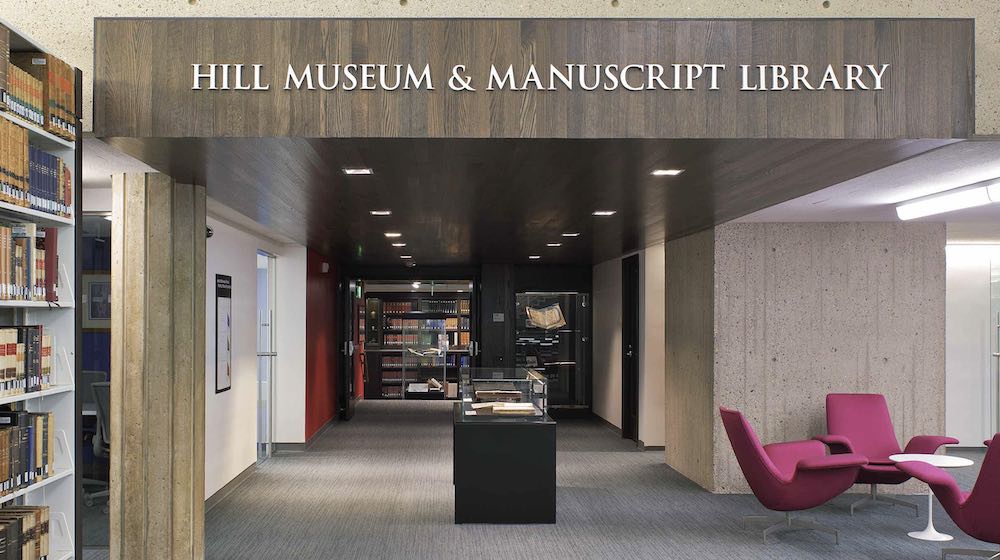Cultural Heritage Present And Future — A Benedictine Monk’s Long View
Cultural Heritage Present and Future — A Benedictine Monk’s Long View
The National Endowment for the Humanities (NEH) selected Father Columba Stewart, executive director of HMML, to deliver the 2019 Jefferson Lecture in the Humanities—the highest honor the federal government bestows for distinguished intellectual achievement in the humanities. The lecture was delivered by Fr. Columba on October 7, 2019, at the Warner Theatre in Washington, D.C.
Introduction
Chairman Peede, distinguished guests, ladies and gentlemen: what a delight and honor to be with you in this beautiful and historic place. This evening I will speak about many things: monks; manuscripts; the work of our organization, the Hill Museum and Manuscript Library, which we call “HMML,” and why the protection of cultural heritage matters here and now.
Monks
In 1142, a powerful Benedictine abbot traveled to Spain. Known as Peter the Venerable for his wisdom, he ruled a federation of 600 monasteries from his base at the Abbey of Cluny in Burgundy. The journey across the Pyrenees was long, and his agenda was packed with kings, bishops, abbots, and complex negotiations. Abbot Peter’s visit to Toledo, reconquered a few decades earlier after almost four centuries of Muslim rule, led him to a surprising decision. He summoned scholars of Arabic—Christian scholars of Arabic—and set them to work translating Islamic texts into Latin. Preeminent among them was the Qur’an itself, entrusted to an English cleric who had learned Arabic to gain access to scientific literature in that language, including Arabic translations of otherwise lost Classical Greek texts.
What was this abbot thinking? He was not a scholar of comparative religion as you might find in a modern university. He was a medieval abbot, facing a powerful and highly literate religious tradition he considered to be fundamentally incompatible with his own. His intention was adversarial. Nonetheless, he embraced the humanistic principle that to understand people of another culture, with different beliefs, we must listen to them in their own voice, learning their language, reading and understanding their texts. As a Benedictine monk, Abbot Peter belonged to a community of readers engaged in the study of Christian sacred texts and related literature. That is the truth behind the familiar trope of a monk hunched over a copy desk, quill in hand, writing texts on reams of parchment: a belief in the power of words. Their labor of copying was for the sake of learning, learning for the sake of understanding, understanding for the sake of worship and thanksgiving. Abbot Peter could see that the same was true of the followers of Islam. That shared experience made intellectual engagement—and debate—possible.
“Consider: anything written before the invention of printing has come down to us in the form of a manuscript.”
We monks put down deep roots and try to cultivate through communal monastic practices the grounded humanity that Greek philosophers and their Christian heirs characterized as learning “to dwell with the self” (habitare secum). At its best, that monastic “stability” frees the mind to roam widely and to make unexpected applications of what is found. Alongside the theological tomes would be texts of philosophy, grammar and mathematics, astronomy and history, medicine and law. You may not realize that Benedictines have always been inventors or early adopters of technology. Clocks were developed in the middle ages to wake monks up for early prayers. The introduction of movable type and mechanical printing came as a great relief: the second book printed on Gutenberg’s equipment was a Benedictine Psalter.
The humanist instinct threads its way through the long history of my Benedictine tradition. Tonight, you see me in the traditional monastic garb that is our formal tribute to our heritage. But the work I do applying the Benedictine tradition of preserving human thought for the contemporary world requires a more versatile wardrobe, one adapted to the desert of Timbuktu, the combat environment of Mosul, or the secular environment of the modern academy. As the old saying goes, cucullus non facit monachum, “the habit doesn’t make the monk,” but commitment to the humanities surely does.
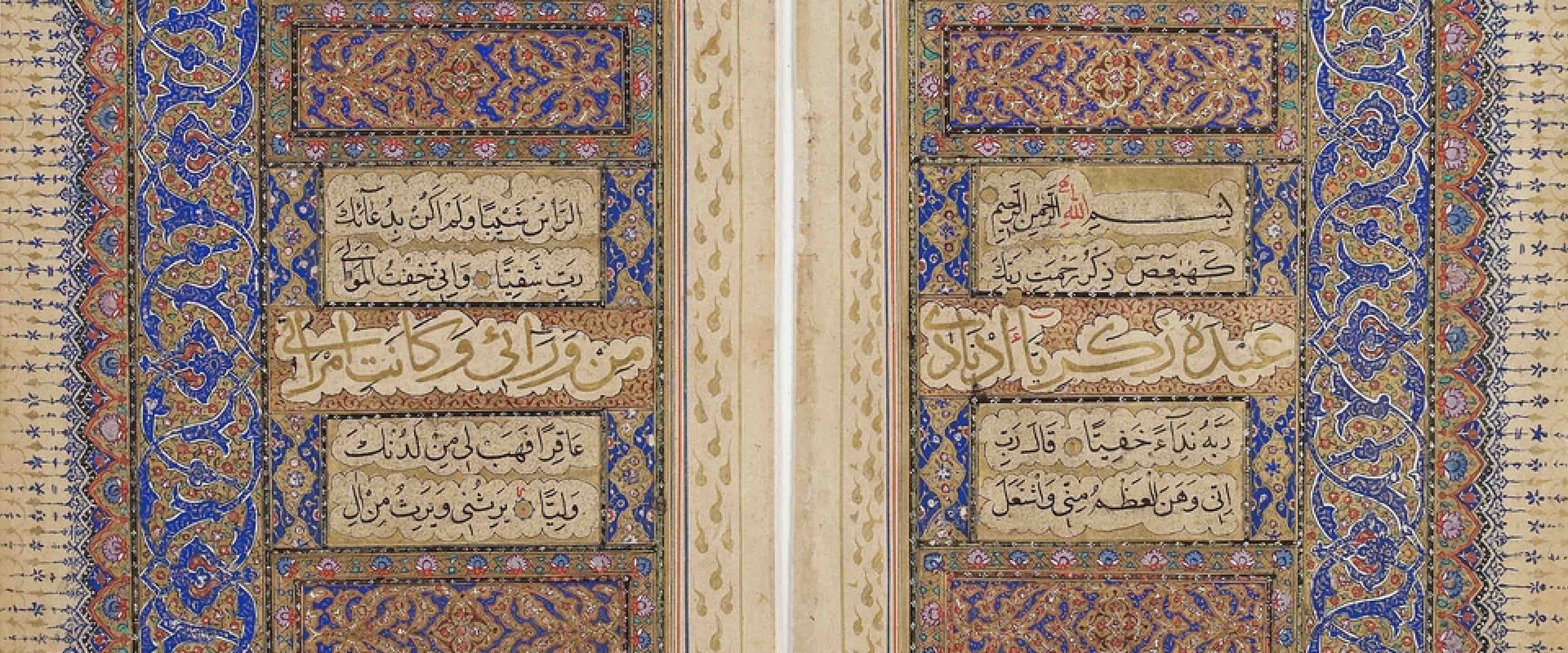
Manuscripts
That medieval monk in your mind’s eye is preoccupied with a manuscript. The same is true of this modern one. Even though manuscripts—handwritten books—are at least a couple of technological stages behind the ways we access information today, we still rely on them for access to the past. Consider: anything written before the invention of printing has come down to us in the form of a manuscript. A surprising number of those texts have not yet been printed or put online, and we keep finding new texts in manuscripts that have lain hidden for centuries. In many parts of the world, printing came late or was little used, meaning that even less of the literature of these communities is available in modern formats. To know what is most important to such communities, to understand the questions they asked and what gave them purpose and identity, we need to read their manuscripts.
“Our project started in Benedictine monasteries in Austria, employing local technicians, as we always do, to involve them in the preservation of their own heritage.”
Manuscripts matter even for well-known texts, because each manuscript is unique. Each copy of a printed book will be exactly the same as another. Not so for manuscripts: the texts will vary from the same writings found in another manuscript because there was no standard edition from which every scribe would copy. Those differences might be slight or substantial, even to the point of changing the meaning of the text. Scribes would “polish” a text by smoothing out the spelling or grammar, they might amp up or tone down controversial passages. Nor were they infallible: they always made mistakes. The cumulative effect of those human interventions is that every manuscript must be approached on its own terms, as a particular incarnation of the writings it contains. Framing the text are readers’ notes in the margins, ownership inscriptions on the flyleaves, the scribe’s sign-off at the end. These elements reveal the hands the manuscript passed through to reach us and offer clues as to how its contents were received and understood. Together they form the manuscript’s cultural genome and thus allow us to place it within a cultural lineage.
You will find thousands of manuscripts in the great libraries of Europe and North America, on display and available for study, all of them cataloged and usually well known to scholars. Much of what we think we know about the past has been written on the basis of the manuscripts in the British Library, the Vatican Library, the French Bibliothèque Nationale, and their peer institutions. Their collections of Latin and other European manuscripts are vast and comprehensive, accounting for the great majority of surviving western manuscripts.
When we consider the other cultures represented in the collections of those great libraries, our footing is less sure. All of those manuscripts came from somewhere else, the spoils of war and colonial expansion like the artistic treasures in major museums. The manuscripts taken to western libraries provide only a partial view of their source cultures. To rely on them alone is akin to looking at a mummy in a museum display and assuming we understand ancient Egyptians. What about the manuscripts the European and American explorers and collectors never found? Or the cultures they weren’t interested in plundering?
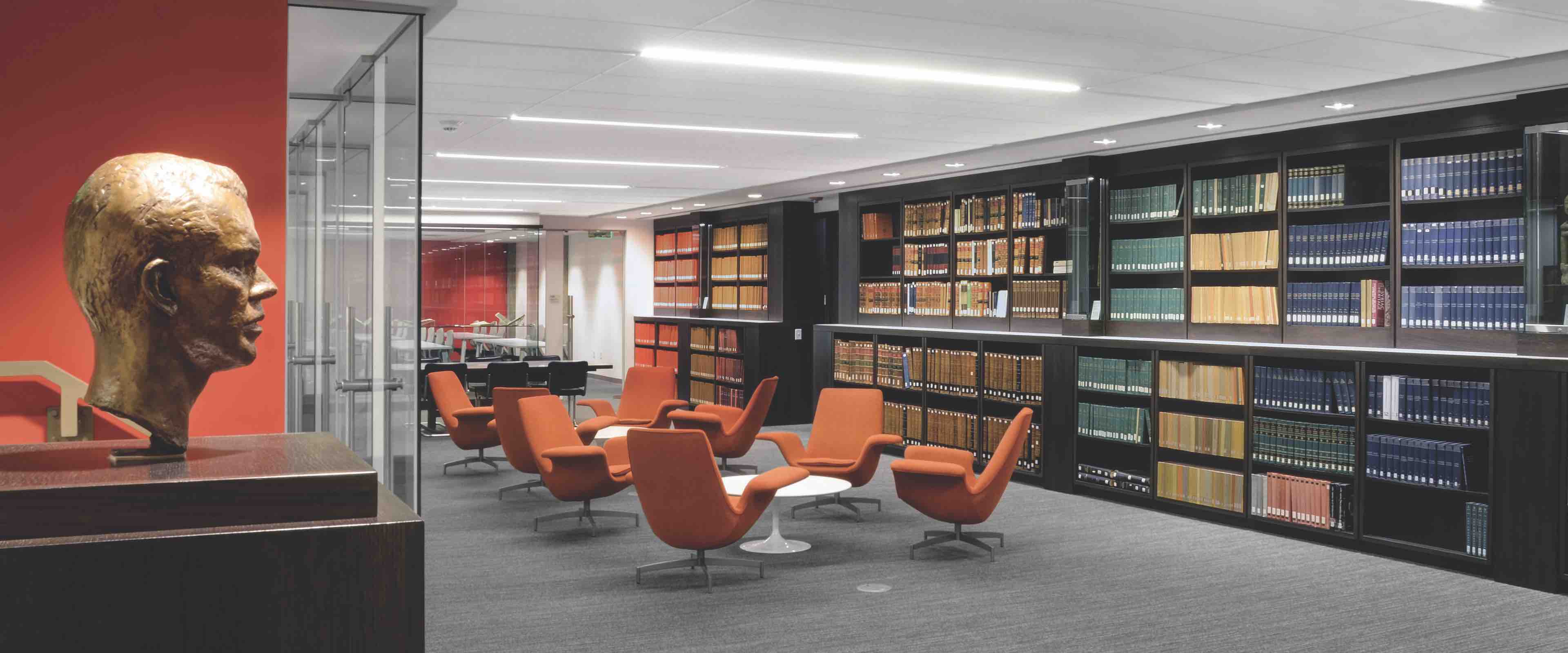
HMML
The project I lead began in 1965 as an effort by my monastery to microfilm Latin manuscripts in European Benedictine libraries. It was two decades after the devastation of the Second World War, three years after the Cuban missile crisis, and a very chilly phase of the Cold War. The founder, Father Oliver Kapsner, feared that European Benedictine heritage would be vaporized if there were a World War III. Monte Cassino in Italy, the mother abbey of Benedictines, had been totally destroyed in 1944. A nuclear war would be far more devastating. There was not anything we monks in Minnesota could do to protect the churches and cloisters, but we could microfilm their manuscripts and keep a back-up copy in the United States. The Vatican Library had done something similar in the 1950s, depositing microfilms of many of their manuscripts at Saint Louis University in Missouri. Our project started in Benedictine monasteries in Austria, employing local technicians, as we always do, to involve them in the preservation of their own heritage. Austria was one of the few countries in Europe where monastic libraries had not been seized during the Reformation or the French Revolution and its aftermath. The scope of the work soon widened to libraries of other religious orders, then to universities and national libraries. The pace was swift, and the result by the end of the twentieth century was a film archive of almost 85,000 western manuscripts.
Along the way there came a serendipitous event that changed the course of the project. An American scholar of biblical texts approached our then-director, Dr. Julian Plante, with the idea of microfilming manuscripts in the monasteries and churches of Ethiopia. This great African nation is the home of an ancient Christian community that had never undergone the narrowing of the biblical canon—the official list of writings constituting the Christian Bible—that occurred in other parts of the early Christian world. Consequently, Ethiopian Christians preserved a broad array of writings later excluded from the Bible of the Byzantine and Roman traditions. Because of British and Italian military and colonial incursions, there were Ethiopian manuscripts in London and Rome that provided a tantalizing glimpse of this unique form of eastern Christianity and its literary riches. Microfilming began in 1971, with the work done by Ethiopians, the technical support from us, and funding from the NEH among other foundations.
The situation in Ethiopia worsened when a violent revolution deposed the Emperor and installed a communist government hostile to the Church. Both Emperor and Patriarch would eventually be imprisoned and killed. What had begun as a kind of archeological expedition to discover ancient texts became a rescue project to preserve manuscripts in a nation convulsed by political upheaval and then a civil war. The cameras kept going, working throughout the 1970s, 1980s, and into the early 1990s. In the end, 9,000 manuscripts were microfilmed under often harrowing circumstances. From those microfilms the history of Ethiopic literature has been rewritten, thanks to the cataloging done by distinguished scholar and Macarthur Fellow Professor Getachew Haile and his colleague, the late Dr. William Macomber.
This “Ethiopian Manuscript Microfilm Library” also demonstrates what happens to manuscripts in times of turmoil. A few years back, a professor from Howard University approached Professor Haile for help identifying an Ethiopian manuscript recently donated to the university. She showed him photographs of the manuscript, and he recognized it as one of the thousands microfilmed in our project. After it was photographed in 1976 (EMML 6533), the manuscript was taken out of Ethiopia and found its way into a private American collection. Unlike most stories of this kind, this one had a happy ending: Howard University repatriated the manuscript to the monastery in Ethiopia from which it had been taken. If not for the microfilm copy, the origin of that manuscript might never have been known. Like many other artifacts in our museums and libraries, the manuscript would have remained isolated from the place and the other manuscripts that provide a context for its interpretation. Sadly, more typical is the case of another, even more valuable, Ethiopian manuscript microfilmed in the 1970s (EMML 7014). That one is now in a well-known private collection. In their online catalog, the provenance given for the manuscript is simply the name of the dealer from whom it was purchased.
By the time those manuscripts were taken out of Ethiopia, the colonial era was over. International protocols and national laws regulated the export of cultural heritage. Neither of these manuscripts should have adorned a private collection or enriched a dealer. Meanwhile, the people of Ethiopia struggled to survive a brutal government, a civil war, famines, and epidemics. This story illustrates two of the greatest threats to cultural heritage: the desperation that leads people to sell off their own heritage in order to feed their families, and the profiteering by those who exploit that misfortune.
The Ethiopian project inspired another serendipitous—or dare I say providential?—chapter in our work. Just after the turn of the millennium, Orthodox Christians in Lebanon asked for HMML’s help in dealing with the aftermath of the civil war that had ended about a decade earlier. Collections had been moved, valuable manuscripts had been stolen and held for ransom, and some had simply disappeared. We launched a project in northern Lebanon in April 2003, at the very same moment that American ground forces were approaching Baghdad. Lebanon had settled down; Iraq was heating up; no one could anticipate what would come next.
As our work in Lebanon expanded, we extended the project to Syria, forming partnerships with several church leaders in Aleppo, as well as in Homs and Damascus. Things were going well, and we even found a partner in Iraq. But then in 2011, Syria began to unravel as the spirit of the Arab Spring spread across the region. Three years later came the conquest by ISIS of much of northern Iraq, driving tens of thousands of Christians and Yazidis from Mosul and the villages of the Nineveh plain. The world had not seen displacement of peoples on this scale since the end of the Second World War and the partition of India in 1947. ISIS broadcast videos of their crude but effective demolition of ancient Assyrian and Christian monuments in Iraq, and then we watched the destruction of so much in Syria, including historic places such as Palmyra. In Turkey, where we had worked with the Armenian community in Istanbul, and more extensively in the Syriac Christian libraries of the southeast, the areas we had visited so many times became “no-go” zones because of rising tensions between Kurds and Turks, exacerbated by the Syrian conflict just a few miles away. As is often the case for ethnic and religious minorities, the Christians—those who had not already emigrated—were caught in the middle. In less than fifteen years, so much of what we knew—or thought we knew—about the Middle East had melted away, replaced by the unpredicted and unfathomable.
Through it all, our local partners kept photographing manuscripts as best they could, while collections were moved, hidden, and in some cases destroyed. For too many of those manuscripts, all that remains are the digital images and perhaps a few charred pages.
“Major manuscript collections in Mosul had been destroyed, leaving behind only the digital images and a handful of severely damaged volumes.”
The human toll upon our friends and colleagues was immense. In 2013, the Syriac Orthodox Metropolitan of Aleppo, Mor Gregorios Yuhanna Ibrahim, was kidnapped along with his Greek Orthodox counterpart, Metropolitan Boulos Yazigi. They were never heard from again. Mor Gregorios had been an enthusiastic supporter of our work with his community’s manuscripts in Aleppo. Many of those manuscripts had been carried to Aleppo in 1923 as Christians fled the Turkish city of Şanliurfa, known in ancient times as Edessa, the very cradle of Syriac Christianity. These refugees were forced to leave their ancestral home during the Seyfo (Sword), the systematic massacre of Syriac Christians that echoed the Armenian Genocide a few years before.
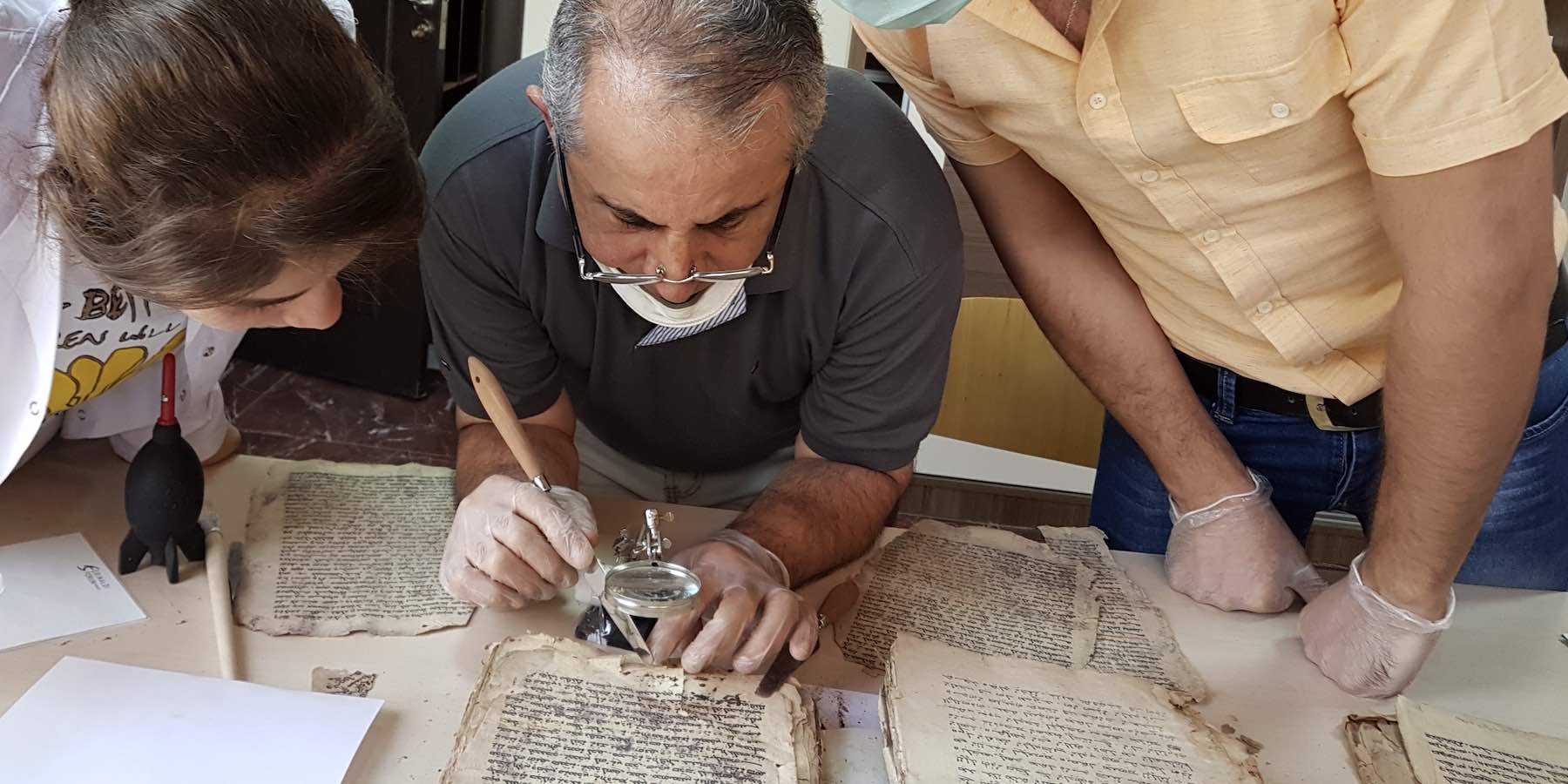
In Iraq it would be even worse. Our partner there, Father Najeeb Michaeel, a Dominican friar, had established a center for digitization of Christian manuscripts in Qaraqosh, an ancient Christian village between Mosul and Erbil. Since 1750, Father Najeeb’s community had been in Mosul, the ancient city of Nineveh where the prophet Jonah preached repentance. The kidnapping and murder of the Chaldean Catholic Archbishop Paul Rahho in 2008 made it too dangerous for clergy to remain in Mosul, and they relocated to Qaraqosh. Father Najeeb gained access to important ecclesiastical and private collections across Iraq, and with our help his team digitized thousands of Syriac, Arabic, and Armenian manuscripts.
When I made my first visit to Qaraqosh in 2009, things seemed to be settling down in Iraq, but the situation remained tense. Because Americans were not popular in the area around Qaraqosh, I was advised by Father Najeeb to present myself as a French Benedictine (our common language was French). By coincidence, we were there the very night that President Obama announced the withdrawal of American forces from Iraq. We gathered in the community room of the seminary to watch the President of the United States on television, but of course I was now French. Then a bright young man turned to me and said, “I don’t speak French. Do you speak English?” What to do? I tried a bit of Inspector Clouseau-accented English, but it felt—and was—utterly ridiculous. The next day as I said goodbye to that young man, he leaned over and whispered: “we all have secrets: yours is safe with me.”
Over the years, things improved, attitudes softened, and I was welcomed wherever I went. Then came the summer of 2014, the summer of ISIS. When news broke of the fall of Mosul, I was in Jerusalem. As soon as I could get through to Father Najeeb, I assured him of our support and asked how things looked. It didn’t seem at that time that ISIS was moving east from Mosul into the Nineveh Plain, home of minority religious communities including Christians and Yazidis, and former home of ancient Jewish communities compelled to leave Iraq in the mid-twentieth century. Fr. Najeeb’s village of Qaraqosh was guarded by Kurdish militias as part of the outer ring of defenses of their autonomous region. Nonetheless, having already evacuated the manuscripts and archives of the Dominicans from Mosul to Qaraqosh, Father Najeeb decided to begin to move them again, quietly, to Erbil, the capital of Iraqi Kurdistan. It was a wise move.
On the morning of August 6, the Feast of the Transfiguration of Jesus, ISIS was advancing and the Kurdish guards in Qaraqosh retreated. Residents of that and the many other villages of the Nineveh Plain had hours to grab what they could and get to Erbil, travelling forty miles in the heat of Iraqi summer. I visited them many times, marveling at how they recreated a kind of village life in the refugee camps. Unforgettable was Nimshe, an elderly Yazidi woman in traditional dress, who showed me a safety pin with a medal of the Virgin Mary on one end and a small silk bag containing dust from the tomb of a Yazidi saint on the other. Her daughter-in-law had trouble conceiving, and so Nimshe went to a Christian church to pray for the help of the Virgin Mary. The prayer was heard. This kind of intercommunal contact, this occasional blurring of boundaries, was common throughout the region before the shocks of our present century rendered it impossible.
As the refugees started over in Erbil, ISIS was demolishing ancient Nimrud with barrel bombs, destroying the artifacts in the Mosul museum with sledgehammers, and dynamiting churches. The manuscript collections were portable and easy to hide, but only after the retreat of ISIS from the Nineveh Plain in 2016 and the final act of the reconquest of Mosul in 2017 did the picture become clear. Major manuscript collections in Mosul had been destroyed, leaving behind only the digital images and a handful of severely damaged volumes. Most collections outside of Mosul, however, had been saved: moved at the last minute, or successfully concealed. This was the case at Mar Behnam Monastery, where some 500 manuscripts were hidden behind a false wall and never discovered during the two-year occupation of the monastery by ISIS. When the monks returned to their now wrecked and defaced monastery, where ISIS had blown up the shrines of the saints to whom the monastery was dedicated, they found the manuscripts intact, safe in their hiding place, a still-beating heart in the battered and bruised body of the cloister.
HMML and Islamic Manuscripts
I began this lecture with Peter the Venerable for a reason. For a Benedictine monk to partner with a Dominican friar or a Syriac Orthodox bishop to preserve Christian manuscripts is understandable. It may not be readily apparent why our project at HMML has become so involved with the digital preservation of manuscripts belonging to Muslim communities in Africa, the Middle East, and south Asia.
Several years ago, I was at a conference devoted to Islamic manuscripts and gave a presentation on our work. During the Q&A, a member of the audience stood up and declared, “what we need are Muslim Benedictines!” In fact, I have had the privilege to work with Muslims around the world who share my passion for preserving manuscript heritage.
This new chapter in the work of HMML, like the ones already recounted, began serendipitously. In 2013, the Palestinian field director for our work with Christian manuscript libraries in the Old City of Jerusalem told me about a recent conversation with a friend about his job with HMML. The friend belongs to an old and distinguished Muslim family. Fascinated by David’s work, he said, “what about us? We have manuscripts too.” On my next trip to Jerusalem, I met with members of the Budeiry family and saw their library. The house is immediately adjacent to the Haram ash-Sharif, also known as the Temple Mount. From the window of one of the bedrooms—later to become the digitization studio—was a million-dollar view of the Dome of the Rock. As I learned more about their family’s library and discussed the project with our board, I became convinced that we must work with them. The Budeiry manuscripts and the Syriac Christian manuscripts we had been digitizing at a monastery only a few minutes’ walk from the Budeiry home belong to a cultural eco-system that has existed since the arrival of Islam to Palestine in the seventh century. Christians and Muslims have greeted each other in the streets, done business, engaged in religious disputes, and have read each other’s books. Like Peter the Venerable, their interest may have been for the sake of persuasion or refutation, but it may also have been to share scientific and historical knowledge. All of the Hebrew manuscripts of Jerusalem, and indeed around the world, had already been photographed by an Israeli project. Our task was to do the same for the Christian and Islamic ones.
This new phase of our work soon led to an even larger involvement with Islamic manuscript heritage from another fabled place: the desert city of Timbuktu in northern Mali. Timbuktu was at one time a center of political power, trade, religion, and culture. Located in the Sahel, the transitional zone between the desert and the savanna, the city was the terminus of trans-Saharan, savanna and forest trade routes that brought salt, goods, and travelers from North Africa and even beyond, as well as gold, slaves, textiles, and other goods from the south. And, of course, there were manuscripts travelling the same pathways.
“We have been privileged to work both in Bamako and in Timbuktu, reuniting virtually what was once a single manuscript culture spread across dozens of libraries in Timbuktu and nearby settlements.”
The recent story of Timbuktu is once again a tale of manuscripts moved and manuscripts hidden. The story of the evacuation of tens, even hundreds, of thousands of manuscripts from Timbuktu by librarian Abdel Kader Haidara, is likely familiar to many of you. Knowing that something was coming—as did Father Najeeb in Iraq—Dr. Haidara quietly sent the manuscripts of his own family’s library and those of more than thirty other families up the Niger River to Bamako, capital of Mali, just in case the threats of religious and ethnic rebel groups to capture Timbuktu and purge its culture of supposed “non-Islamic” elements should come to pass.
In June 2012 those threats were realized. Timbuktu was occupied for several months, its shrines to Muslim saints destroyed, its superb music silenced, the tourist trade on which it depended for economic survival extinguished. Early reports suggesting that its manuscripts had been burned proved to be incorrect: only a few manuscripts left behind as a false trail had been destroyed. All of the others were safe, whether moved to Bamako, or hidden in Timbuktu by families who had protected their manuscripts from Moroccan invaders, French imperialists, and other threats. We have been privileged to work both in Bamako and in Timbuktu, reuniting virtually what was once a single manuscript culture spread across dozens of libraries in Timbuktu and nearby settlements.
Despite its liberation in 2013 by French and Malian troops, the city remains exposed to violence. It is also the only place where I have experienced personal danger, caught up in an attack on a UN post in August 2017. My colleagues and I were not the target of the attack, but the target was close by. We hid in our hotel room for safety while shooting continued around us for several hours. Eventually we were rescued by Swedish troops attached to the UN military mission in Timbuktu and taken to their well-fortified base. The experience was traumatic for us, but its greater importance was as a reminder that the people who live in such places are constantly exposed to such attacks: they don’t just fly in and out, they don’t have UN forces to spirit them away to safety. They, and their cultural heritage as it exists in manuscript, song, textiles, in whatever form, are always at risk. Our efforts to help them, and the occasional inconveniences we experience, are the completely inadequate least we can do.
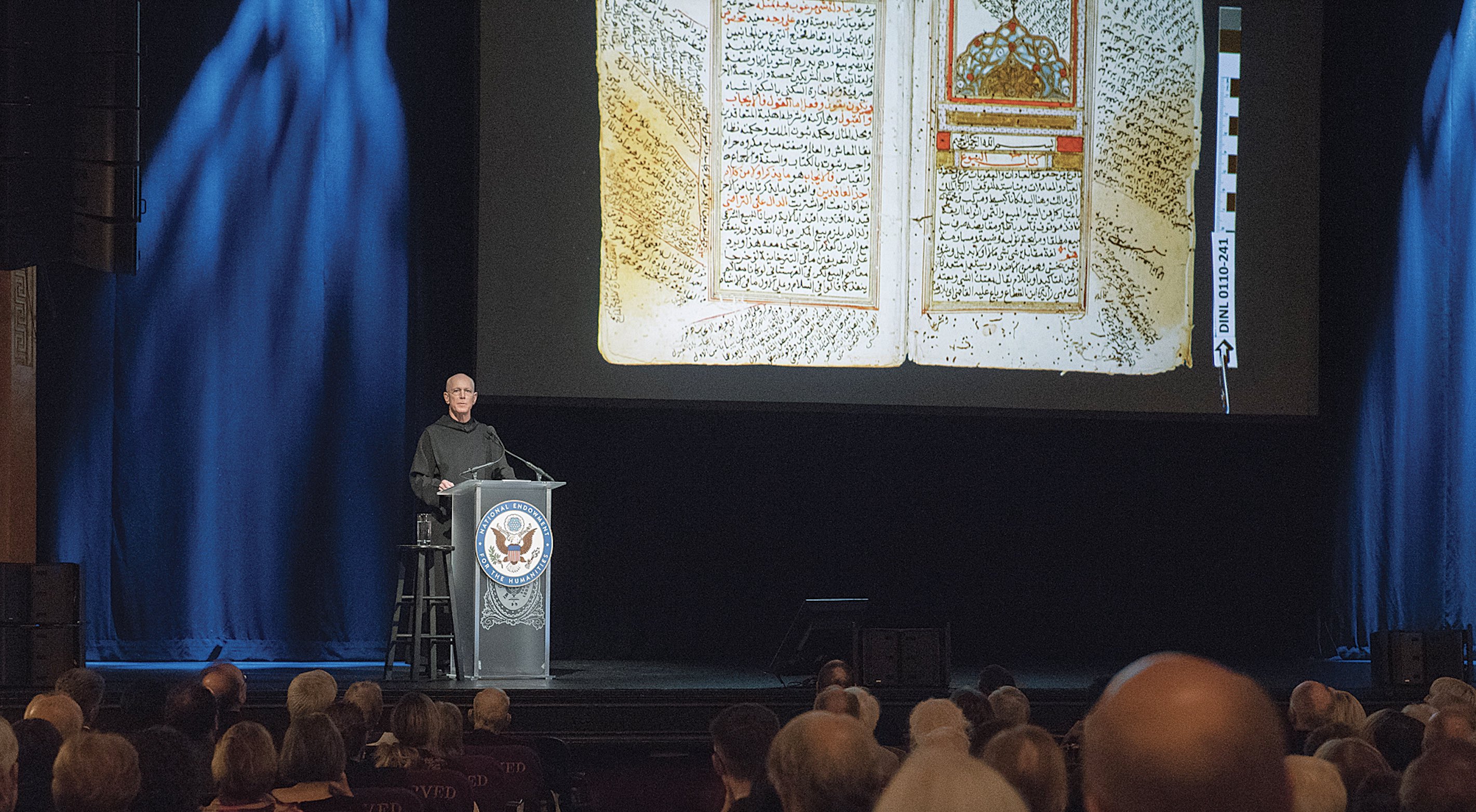
Why it Matters, Here and Now
The intellectual pathways we trace in our preservation efforts reveal the original “internet of things,” the manuscripts that travelled in a merchant’s chest, in a monk’s pocket or pilgrim’s pouch across the known world. The ideas written in them were translated into new languages, challenged conventional assumptions, summoned forth creative replies. Their power was in their words, words usually read aloud, in the way of traditional reading. As they read, they heard another person’s voice, in real time, at the pace I am speaking to you now. It is often said that Jews, Christians, and Muslims are “People of the Book,” even if not the same book. In fact, we were and are people of many books, as are those who follow ancient philosophies or other great religious traditions. In those books are stories, reflections on stories, ideas spun from human observation and experience, attempts to trace how our universe exists and functions in space and time. These books changed the world because their words were heard. They were taken seriously, seriously enough at times to prompt rebuttal or controversy, admiration or adoption. But they were heard.
We are at great risk of losing the capacity to listen, and therefore losing our ability to understand. The opening word of Saint Benedict’s Rule is, appropriately, obsculta, “listen.” The discipline of listening is now an endangered art. Equally endangered are the stores of wisdom contained in the manuscripts of the world, targeted by those fearful of difference or threatened by imaginations broader than their own. Those old books become caught in the indiscriminate destruction of war and left behind by the displacement of their owners. The wisdom contained in them is eroded by the forgetting that besets a diaspora community severed from its roots, resettled in a strange place and often undergoing the slow but inexorable loss of its language and distinctive ways.
It has been my privilege to meet these communities on their own ground, even if they subsequently lost it. Our team at HMML have worked with them to ensure that their deposits of wisdom, their libraries of handwritten texts, the voices of their past, can join the global conversations of the digital era. And we do it side-by-side, as equals.
What happens when we fail to listen, or forget the wisdom of the ancestors? I have said that the opening word of the monastic rule I follow is “listen”: to the words of Scripture, to the events around you, to the stirrings of your own heart. When we fail to listen, when we miss or misread the “signs of the times,” the result can be catastrophic. Peter the Venerable was abbot of Cluny at its zenith; six centuries later, the monastery and its great church were plundered, and its library burned. At one time Cluny had represented a great reform of Benedictine life. At its end, it represented everything the poor had come to hate about the concentration of wealth and power in the church and the aristocracy. No institution, however venerable, is immune to the consequences of forgetting its ideals or ignoring the voices of its critics. We Catholics know this only too well.
And yet, Benedictine are still here! As the motto of the bombed and rebuilt abbey of Monte Cassino proclaims, Succisa virescit: “cut it back, and it flourishes!” Humbled by the Reformation, the French Revolution and its aftermath, we had to rethink what it means to be monks in the modern world. We are still working on that.
“We are at great risk of losing the capacity to listen, and therefore losing our ability to understand.”
What is true of my small part of the human community is also true of nations when they forget to listen, or simply give up trying. Our fragile planet has never been so threatened nor the human beings who inhabit it so divided. The terrain for rational discourse has shrunk to a narrow strip between camps defined and limited by their political views, religious beliefs, race or ethnic identity, beset by anxiety that easily becomes fear and then violence. In such times as these, we must dig deeply into our respective stores of wisdom and offer whatever we find for the sake of mutual understanding, the only possible basis for reconciliation and for the resolve to move forward for the common good. Frankly, we need all the help we can get.
Of course, that wisdom is found not only in manuscripts, but also in the other records of our past. The power of words has illuminated our own nation’s darkest and most troubled times, from the Civil War through Jim Crow and the Civil Rights movement. Abraham Lincoln, Frederick Douglass, Martin Luther King Jr., the late Toni Morrison, my luminous predecessor at this podium: they called us to wrestle with our nation’s original sin of chattel slavery and its woeful legacy. In my own lifetime I have seen the death of Jim Crow, the unmasking of the myth that separate can be equal, the abolition of the poll tax in my native Texas, and the desegregation of the schools I attended. And yet we still tolerate so many, less obvious, versions of those odious practices. We are not done, not nearly.
Now we are facing a new temptation to ostracize and demean, this time because of the sincerely held religious beliefs of our Muslim sisters and brothers. This is not simply a divisive geopolitical issue, but an urgent local problem, even in my adopted state of Minnesota with its immigrant Somali and other Muslim communities. As medieval Christian scholars of Arabic manuscripts came to understand, their enemy was not Islam, however deep their theological differences. The common enemy was—and remains—the fanaticism and ignorance that make understanding impossible.
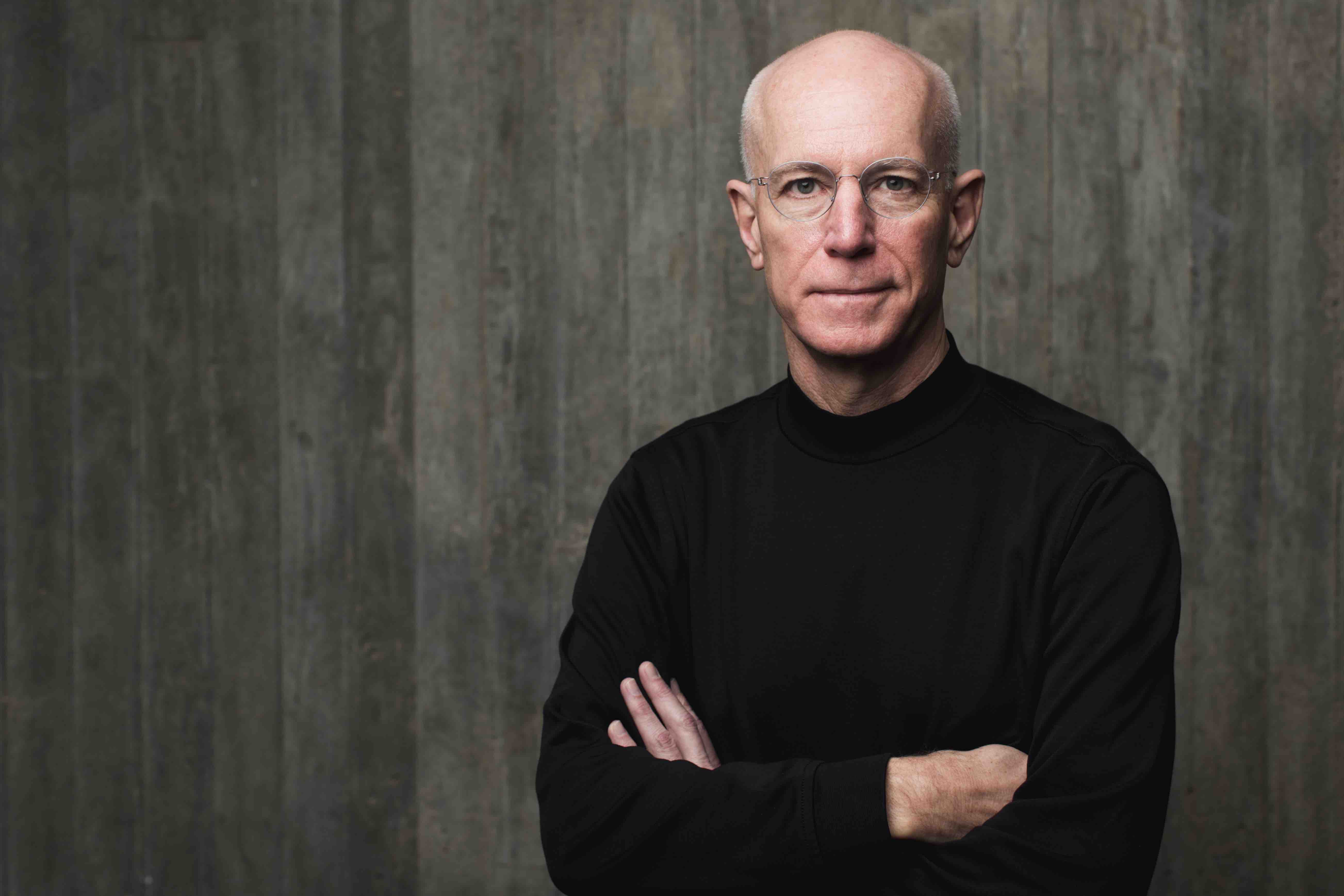
My roots in an ancient monastic tradition give me a certain perspective, and dare I say, a confidence and hope when considering the work that lies before us. I recall the story told long ago by a young African man, confused and emotionally tormented, who heard the voice of a child chanting, Tolle, lege. Tolle, lege. “Pick it up and read it. Pick it up and read it.” He picked up the book at his side, and he read it, as if for the first time. His name was Augustine, and in time he would become the finest writer of western Christianity. But first he had to pick up the book—of course it was a manuscript—and read. May we do the same.
Thank you.




